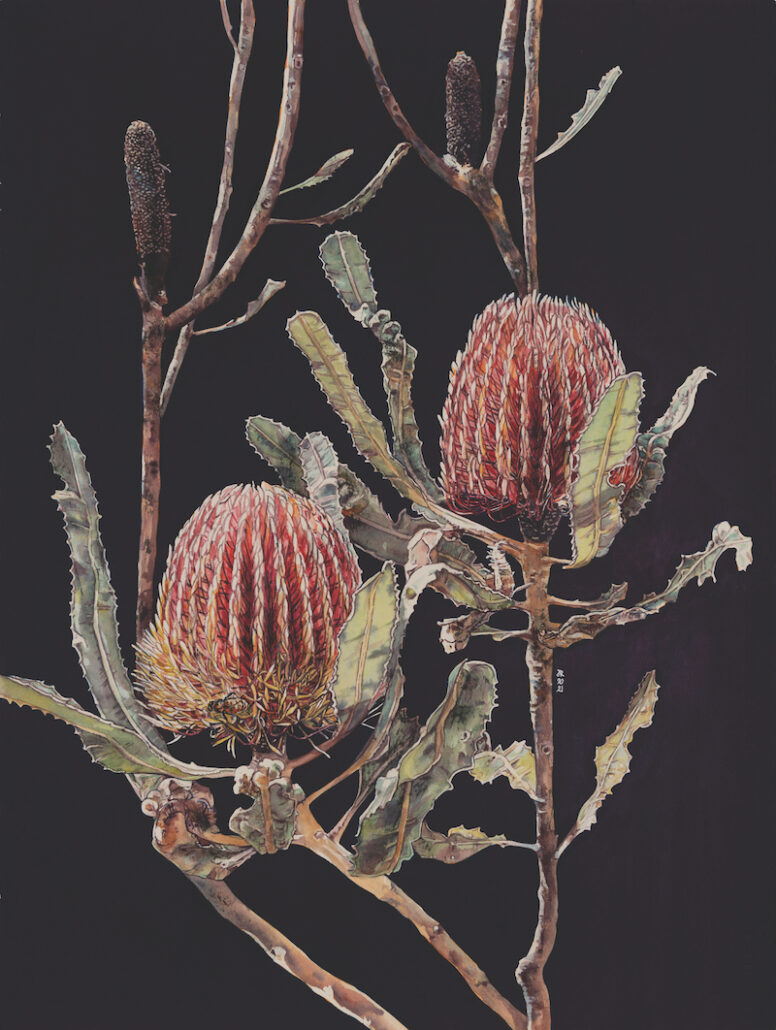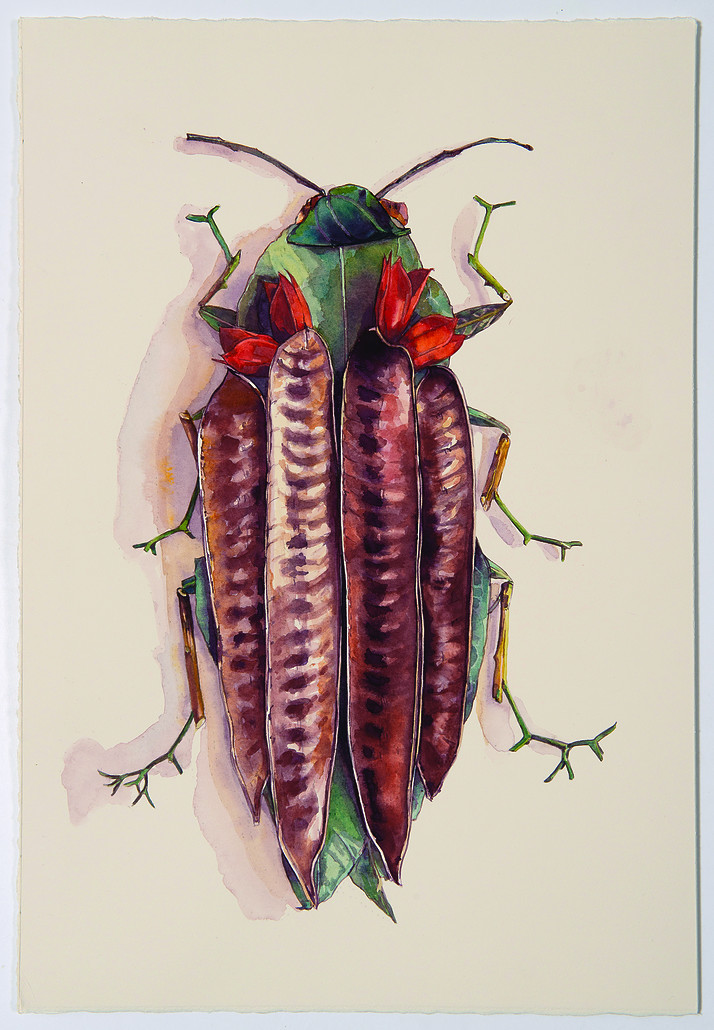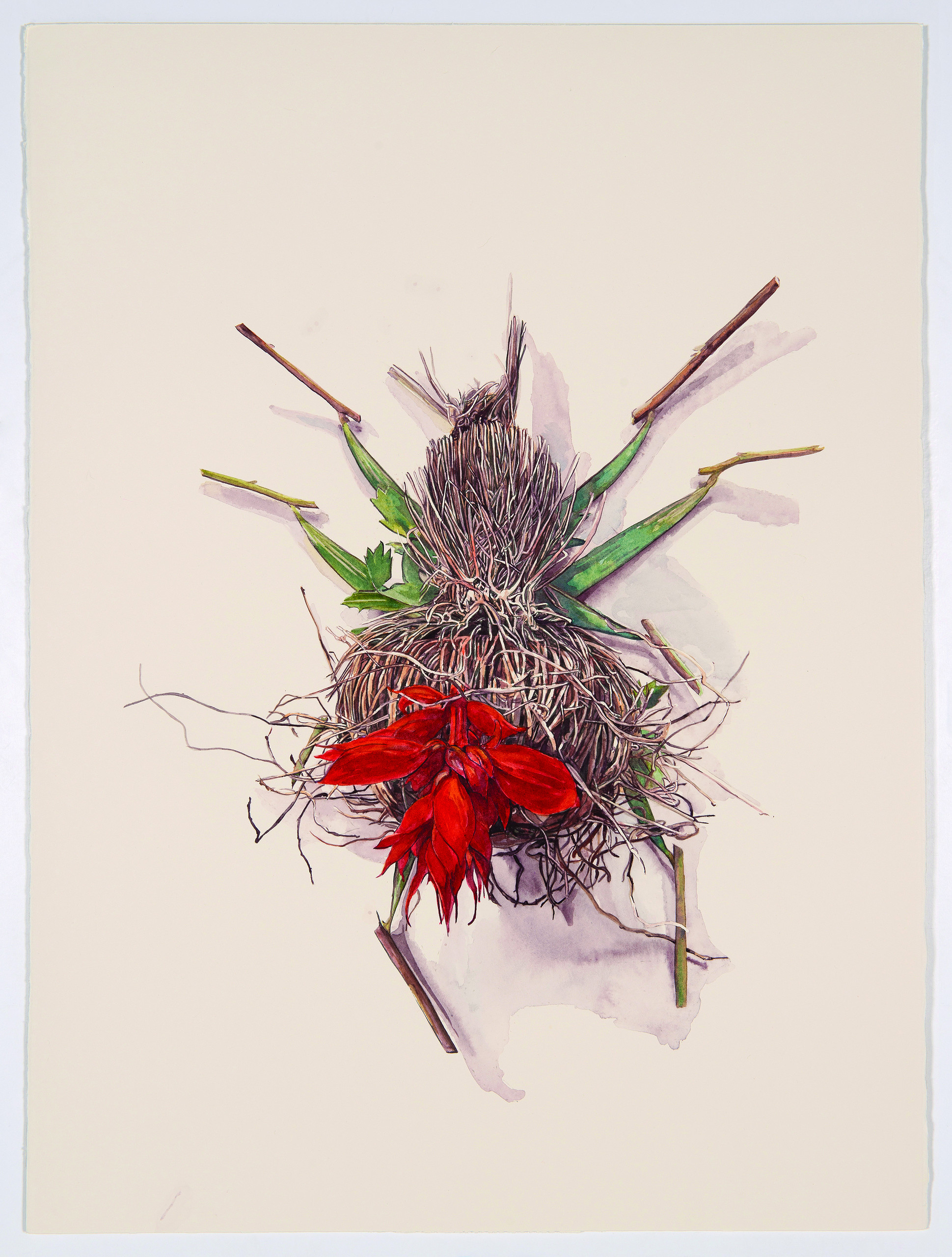Judy Rogers wants viewers to witness her botanical paintings as something akin to a cabinet of curiosities. She is compelled by a sense of urgency to generate awareness regarding the distress suffered by the environment.
Hungarian-born and science-trained, Rogers arrived in Perth in 1995 and realised a lifelong desire by retraining as an artist and curator. Observing the uniqueness of the Australian landscape, and energised with a fresh and passionate vision, she has for the past seven years studied the flora of Western Australia, with works that range from the naturalistic portrayal of the majesty of a banksia, to the playful arrangement of plant parts into insectoid forms, to her more recent experimental compositions where painterly geometric collage reflects the artist’s expressive response to the glory of gum blossoms. During a residency in Dwellingup, a forest village around 100kms south-east of Perth, she created a series: Botanical Bestiary. By collecting plant matter from the forest and configuring the cuttings to resemble insects, she connects plants to the creatures which live amongst them. “I wanted to highlight the impact we have on ecosystems,” she explains, “and for those who see my work to experience limerence… the exciting feeling often referred to as love at first sight.”
The current series she is working on, Verdure, is her account of physical and emotional relations to an individual plant she visits frequently. “The painting is a short story I want to tell of its recent vigorous flowering time, bursting in colour and overflowing the bounds of the frame.”
With fine observation skills and delicacy of technique, Rogers’ practice is an exploration of creative ways to envisage plants and contemplate our world.
Above: Judy Rogers, Botanical Bestiary 3, 2021. Watercolour on paper, 68 x 88cm. Courtesy: the artist.

Judy Rogers, Art Forms in Nature 68, 2021. Watercolour on paper,
80 x 90cm. Courtesy: the artist.

Judy Rogers, Botanical Bestiary 6, 2021. Watercolour on paper, 49 x 68cm. Courtesy: the artist.

Judy Rogers, Verdure 2, 2023. Mixed media on board, 80 x 100cm. Courtesy: the artist.

